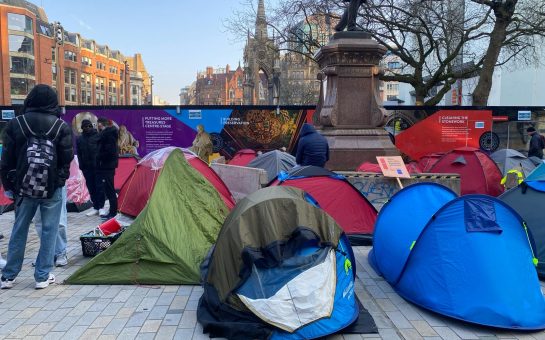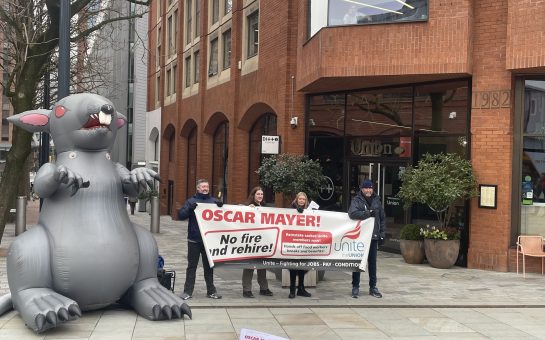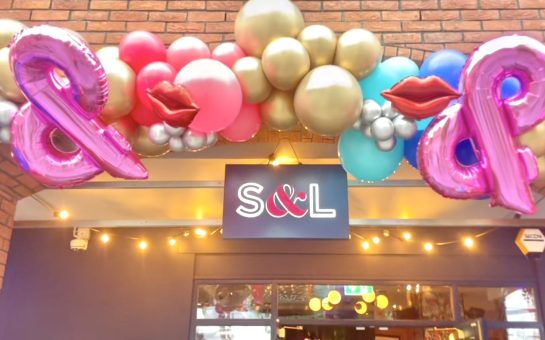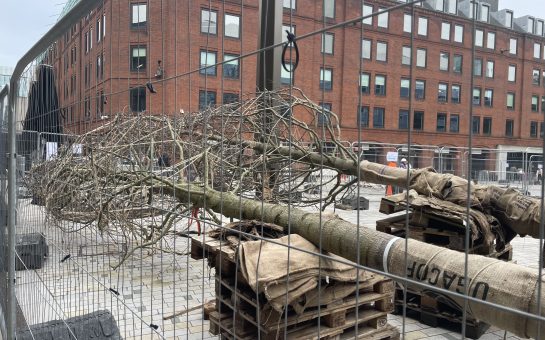From the Peterloo Massacre in 1819 to the ‘Never Going Underground’ protests in 1988, most people are aware of Manchester’s history of radical, liberal politics.
Luckily, there’s also a lot to be discovered just by walking through the streets. But where should you start?
MM spoke to Andy Hoyle from the People’s History Museum to find out the top ten places to go.
He said: “Manchester has been a hotbed of radical, progressive political thought for the last two hundred years.”
“By understanding this urban tradition, we can set a context and hopefully be able to view ourselves as active citizens with the power to make change for the better.”
So, where should you head to first?
The People’s History Museum
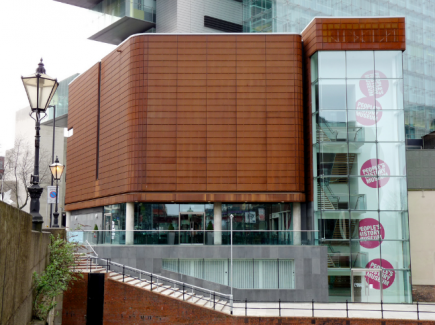 FREE: The museum doesn’t charge for admission
FREE: The museum doesn’t charge for admission
If you just want to get a feel for Manchester history – or if you want to embark on your own grand tour – the People’s History Museum is a great place to start.
In two main galleries plus special exhibitions, the museum tracks the struggle for democracy in Manchester and beyond – from the Peterloo Massacre to the present day.
The venue also boasts the largest collection of political material in Britain, with highlights including the desk used by Thomas Paine to write The Rights of Man and the minutes from the very first meeting of the Labour Party.
Albert Square
Next on the line-up is Albert Square, home to the statues of John Bright and William Gladstone.
Born in Rochdale in 1811, Bright is best known for establishing the Anti-Corn Law League alongside Richard Cobden, which led to the controversial legislation being abolished in 1846.
Essentially the Corn Laws placed taxes on wheat, which protected landowners but increased prices for working people, therefore leading to widespread poverty.
Gladstone, on the other hand, was a politician who was Prime Minister on four occasions.
A liberal who advocated for Ireland’s home rule, he visited Manchester a number of times and also has another two statues in the city.
St Ann’s Square
For those who want to get to know Bright’s partner, third is a statue of Richard Cobden himself.
As well as working with John Bright, Cobden was made MP for Stockport in 1841, where the statue was held for over 120 years before being moved to central Manchester.
During his time in parliament, he also spoke out about the American Civil War in favour of the north and Abraham Lincoln.
Free Trade Hall
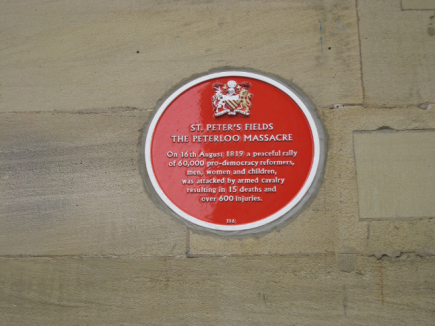 TRAGEDY: 15 people died during the public gathering
TRAGEDY: 15 people died during the public gathering
Whilst the building originally known as the Free Trade Hall has now been converted into a hotel, eagle-eyed visitors will be able to spot a plaque commemorating the site as the location St Peter’s Field, where the Peterloo Massacre took place in 1819.
In a protest demanding that parliamentary representation be reformed, cavalry charged into the crowd, killing 15 people and injuring hundreds of others.
In fact, the hall was built to commemorate the massacre on land donated by Richard Cobden.
But before it was converted into the building we see today, it also hosted a number of important political events, including the first public meeting to address women’s suffrage and speeches by Benjamin Disraeli and Winston Churchill.
The Pankhurst Centre
If you want to know more about the Pankhursts, the family of suffragettes who led to women being granted the vote, the Pankhurst Centre is a must-see tourist destination.
Whereas many other buildings used by the family – mother Emmeline and her daughters Christabel, Sylvia, and Adela – have since been demolished or converted beyond recognition, the Pankhursts’ home on Nelson Street still stands and has been preserved as a museum and heritage centre.
The place where the Women’s Social and Political Union (WSPU) or the suffragette movement was born in 1903, today visitors can see where the family lived for eight years before moving to London.
Sackville Gardens
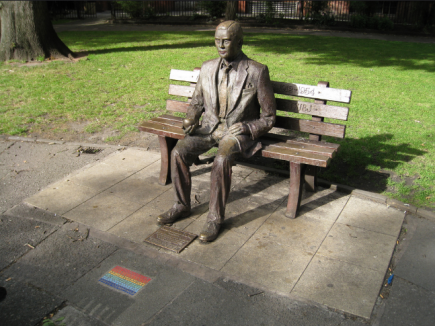 PIONEER: The statue commemorates Turing’s contributions
PIONEER: The statue commemorates Turing’s contributions
On a bench in Sackville Gardens is the Alan Turing Memorial, which was unveiled on June 23, 2001 to mark what would have been the computer scientist’s birthday.
Whilst he was not a politician, Turing remains an important figure in Mancunian political and social life.
Despite being a pioneer of modern computing and an important figure in World War Two, Turing was prosecuted in 1952 for committing homosexual acts and is suspected to have committed suicide two years later.
Situated between the University of Manchester and the Gay Village, the memorial commemorates Turing’s place as a key figure both in the city’s academic life and its struggle for LGBT rights.
HOME
A monument you might not have seen yet, the statue of Friedrich Engels was brought from Ukraine to HOME just last month.
The German philosopher who co-founded Marxism, Engels lived in Manchester for several decades and it was here that he met Karl Marx.
Whilst living here he saw the appalling conditions of the working class and it was this that gave rise to his theories on class struggle.
Chetham’s Library
As well as being the oldest public library in the English speaking world, Chetham’s Library holds a special place in Manchester’s radical history.
Karl Marx and Friedrich Engels were regular visitors to the library and the desk where they began to write the Communist Manifesto is still in the Reading Room today.
Brazennose Street
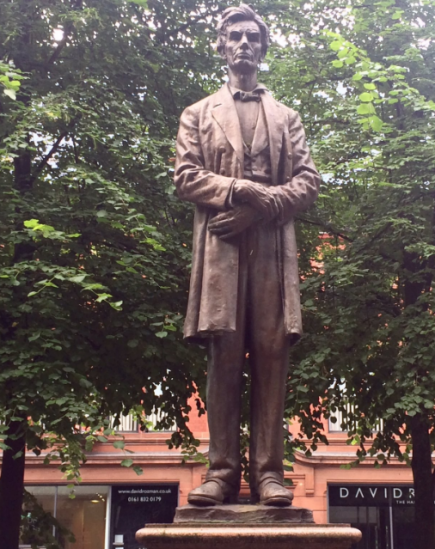 HONEST ABE: There’s a taste of America in Manchester
HONEST ABE: There’s a taste of America in Manchester
On the road between Albert Square and Deansgate, you’ll discover an unusual statue of Abraham Lincoln.
But why can the US president be found in Manchester?
Well, during the American Civil War Lincoln blockaded ports in the south from exporting the cotton picked by slaves as part of his fight to end slavery.
In Manchester the effect of this was the Cotton Famine.
Delivering the statue was Lincoln’s tribute to the people of Manchester, who despite their hardships, helped in the abolition of slavery.
Royal Exchange Theatre
Since 1976, the Royal Exchange Theatre has been a hub for entertainment in Manchester.
But few people know that before that the building also played an important role in the city’s history.
Up until it was damaged in the Second World War, its great hall was one of the largest trade centres for cotton in the world.
Its role in this crucial part of history carried on until trading stopped in 1968.
If you go inside and look up towards the ceiling of the hall, you can see the trading board left exactly as it was on its last day.
Images courtesy of Flickr, with thanks.
